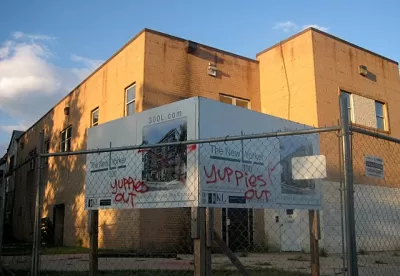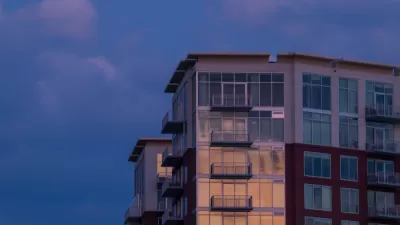The general principle is simple: more density equals lower prices and less environmental impact. But suburbia's imprint is deep, both on cities themselves and on how we expect to inhabit them.

In an article on Grist, Ben Adler doubts whether the urbanist trend will be enough to combat the ills of low density. Although urban populations are rising, "We're watching the demographics of cities change without getting the carbon-emissions-reducing benefits that the back-to-the-cities movement promised."
After decades of what we now consider underdevelopment, cities face chronic housing shortages. "Given that it's the capital of a country with twice as many people as in 1950, you wouldn't expect Washington to have shrunk, would you? Well, it has, and it hasn't fully bounced back."
And even though developers are steadily adding units, social factors stemming from the suburban boom are getting in the way. "D.C. doesn't suffer from a shrinking stock of housing. In fact, it has the most dwelling units in its history — it just has fewer people in each home [...] Middle-class Americans have simply become accustomed to more private space and comfort than previous generations."
Adler traces part of the problem to the racial and spacial vagaries of urban infilling. "In certain neighborhoods that have become trendy, high demand bids up housing prices, empty lots get filled in, and the population grows. In other neighborhoods, demand remains low and abandonment continues." Environmentalists (and some urbanists) want to fill in these empty spaces, only to confront inevitable gentrification and displacement as prices rise.
FULL STORY: Thanks to social change, urban density ain’t what it used to be

Alabama: Trump Terminates Settlements for Black Communities Harmed By Raw Sewage
Trump deemed the landmark civil rights agreement “illegal DEI and environmental justice policy.”

Planetizen Federal Action Tracker
A weekly monitor of how Trump’s orders and actions are impacting planners and planning in America.

The 120 Year Old Tiny Home Villages That Sheltered San Francisco’s Earthquake Refugees
More than a century ago, San Francisco mobilized to house thousands of residents displaced by the 1906 earthquake. Could their strategy offer a model for the present?

Ken Jennings Launches Transit Web Series
The Jeopardy champ wants you to ride public transit.

BLM To Rescind Public Lands Rule
The change will downgrade conservation, once again putting federal land at risk for mining and other extractive uses.

Indy Neighborhood Group Builds Temporary Multi-Use Path
Community members, aided in part by funding from the city, repurposed a vehicle lane to create a protected bike and pedestrian path for the summer season.
Urban Design for Planners 1: Software Tools
This six-course series explores essential urban design concepts using open source software and equips planners with the tools they need to participate fully in the urban design process.
Planning for Universal Design
Learn the tools for implementing Universal Design in planning regulations.
Clanton & Associates, Inc.
Jessamine County Fiscal Court
Institute for Housing and Urban Development Studies (IHS)
City of Grandview
Harvard GSD Executive Education
Toledo-Lucas County Plan Commissions
Salt Lake City
NYU Wagner Graduate School of Public Service





























